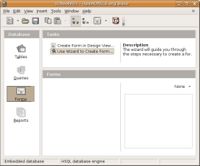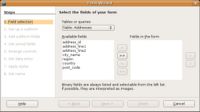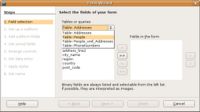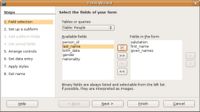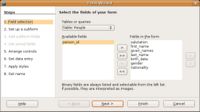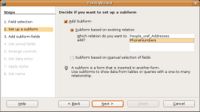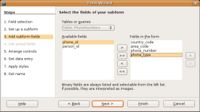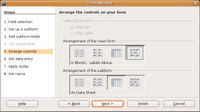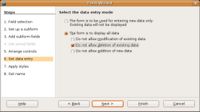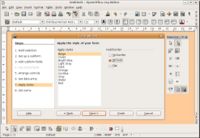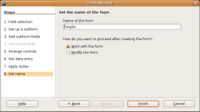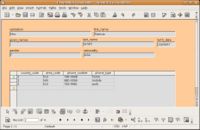CCNC/CCNC Module 5/Data entry using forms/Basic Form Operations/The Form Wizard
| Basic Form Operations |
Opening a Form | Using the Form wizard | Designing a Form | Saving a Form | Deleting a Form | Self Assessment | Summary & FAQs |
Contents
- 1 Using the Forms Wizard
- 2 Outcomes
- 2.1 Using the wizard to create a form
- 2.2 Starting the wizard
- 2.3 Choosing the table
- 2.4 Selecting the fields
- 2.5 Adding a subform
- 2.6 Selecting subform fields
- 2.7 Selecting an arrangement
- 2.8 Choosing a data entry mode
- 2.9 Choosing a style
- 2.10 Naming the form
- 2.11 Complete the form
- 2.12 Test your knowledge
- 3 The forms wizard
Using the Forms Wizard
Upon completion of this tutorial the learner will be able to:
|
Using the wizard to create a form
To create a form based on a table, first click on the forms icon on the left hand side. Then click on Use Wizard to Create Form. This will start the forms wizard, that will prompt a step-by-step building of a form.
Starting the wizard
Select the table you wish to base the form on by selecting it from the drop down box under Tables or queries. Next select the fields you want the form to contain by clicking on them and clicking on the > to move them across. If you want to select all fields click on the double arrow >> and this will move all the fields across. Click the Next button.
Choosing the table
When choosing the table it is best to start with building forms for all the parent tables, and build forms for the child tables later. This is due to the parent-child tables represent the one-to-many relationships and will be represented in the form and subforms that are created when building forms.
Selecting the fields
When selecting the fields that will be available of the form only the fields that can be edited should be placed on the form. Fields that have values added automatically (like the autonumbered PK field) should not be put on the form to avoid incorrect values being entered.
Adding a subform
In some situations a form will contain the database fields within a one-to-many relationship. This relationship will be put onto the form using a subform. A subform adds the many side of the relationship to the form. In the example provided, the "PhoneNumbers" table is being added as a subform to the People table. This is because People can have many Phone Numbers.
Selecting subform fields
Selecting the fields for the subform follows the same path as the fields for the form.
Selecting an arrangement
Choose the label placement and layout that you want and click Next.
Choosing a data entry mode
A form can be used for data entry or to be just read-only. Setting the data entry mode allows three options;
- Create only
- Read Only
- Create Read and Update Only
- Read and Update Only
Choosing a style
The color and style of a form can be set. It is useful to change the style to best suit the user group and their preferences. The style may set (or changed) after the users have had their first review of the new database system.
Naming the form
The form can be named. Providing a descriptive name can be beneficial as the number of forms increases. Well named forms aid in user, administrator and developer comprehension.
Complete the form
Once the form is finished it is a good idea to test the form. As shown in the example the form shows a Person and all their Phone Numbers.
Test your knowledge
